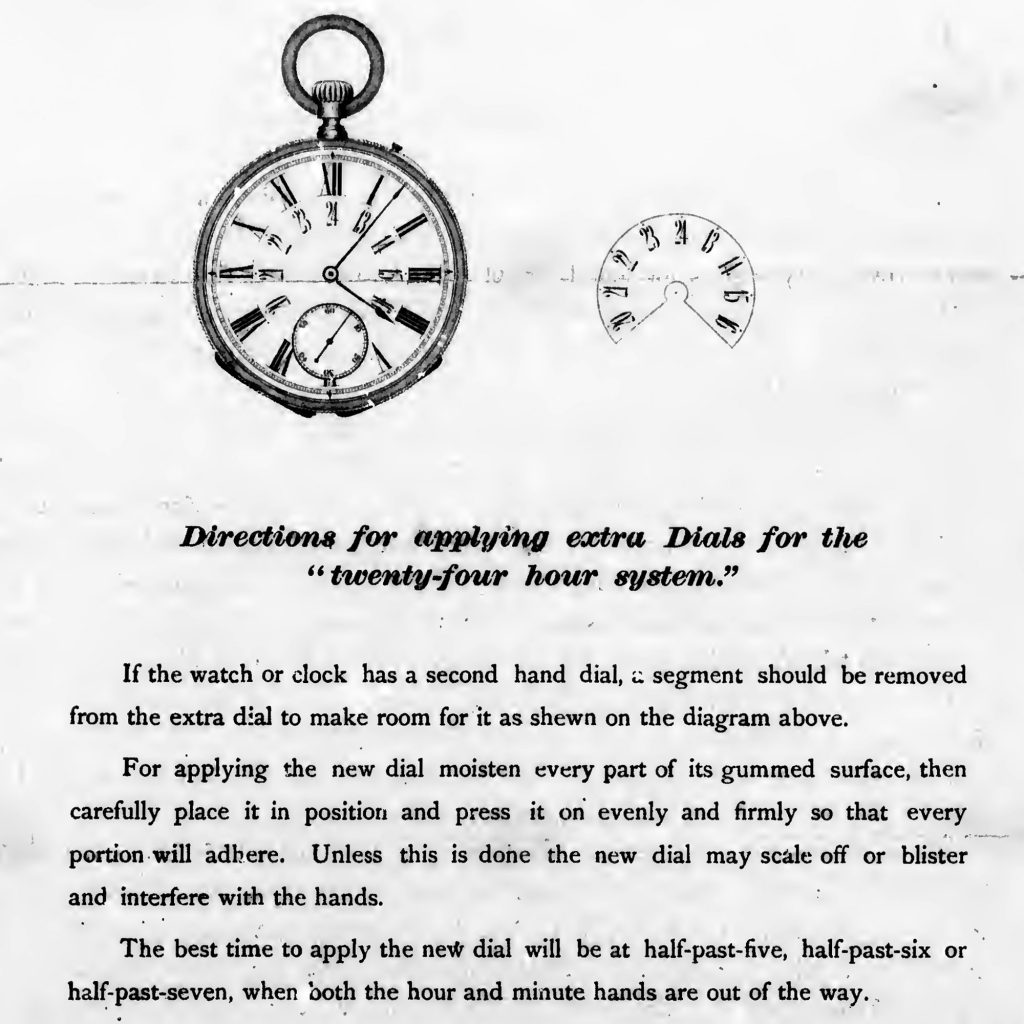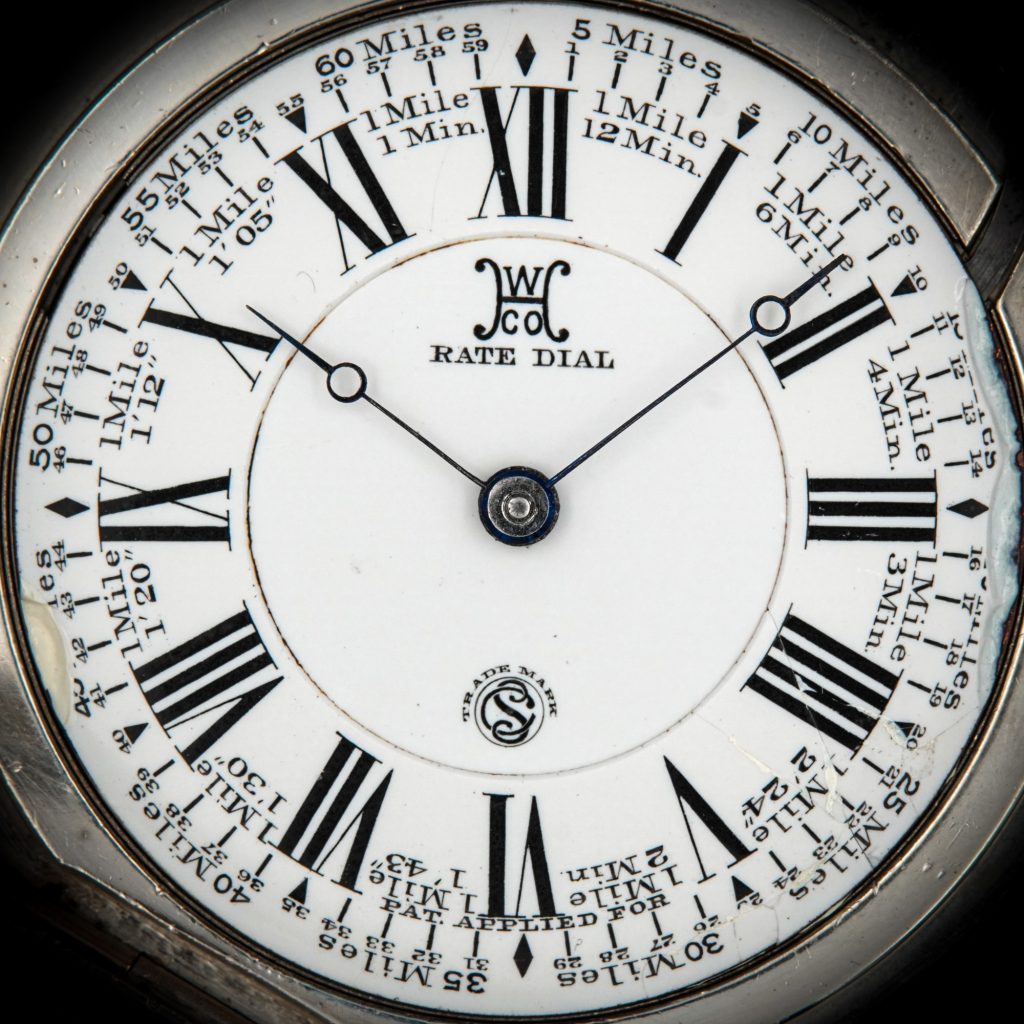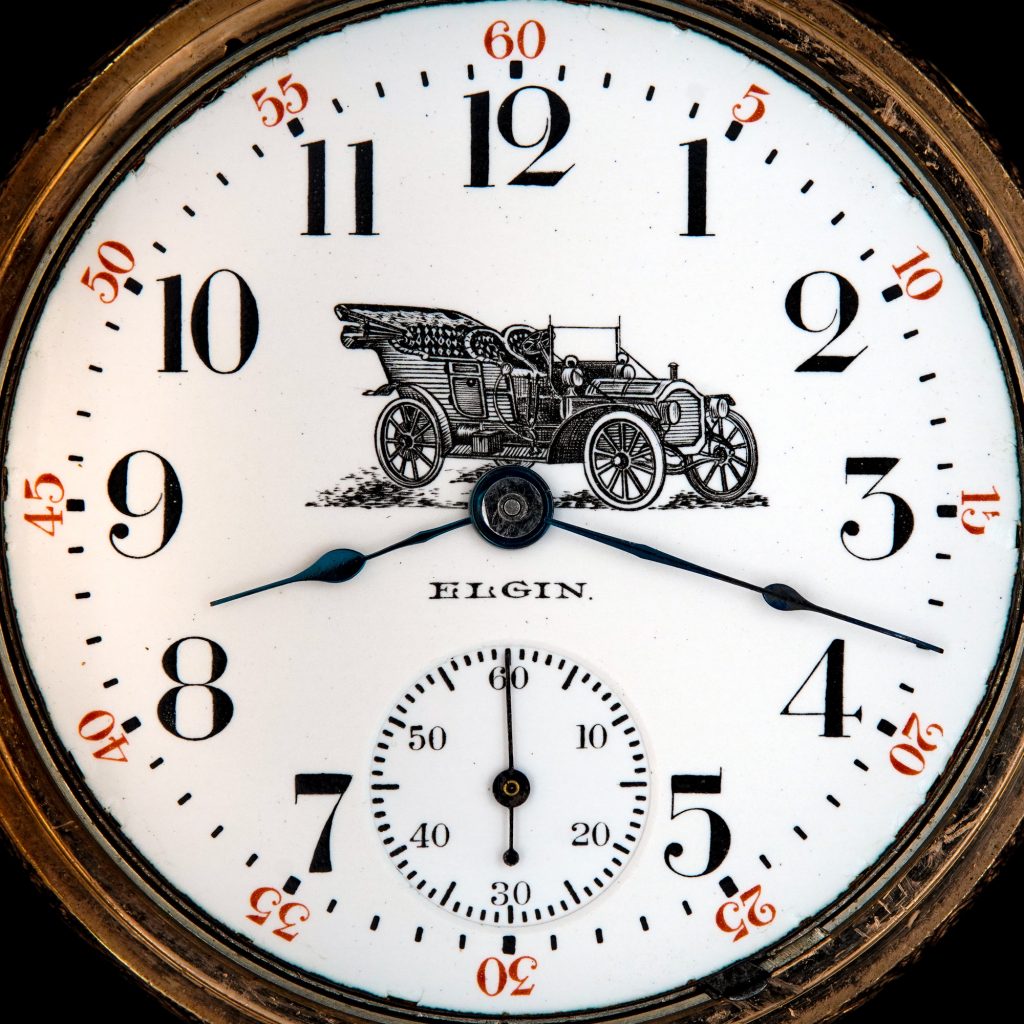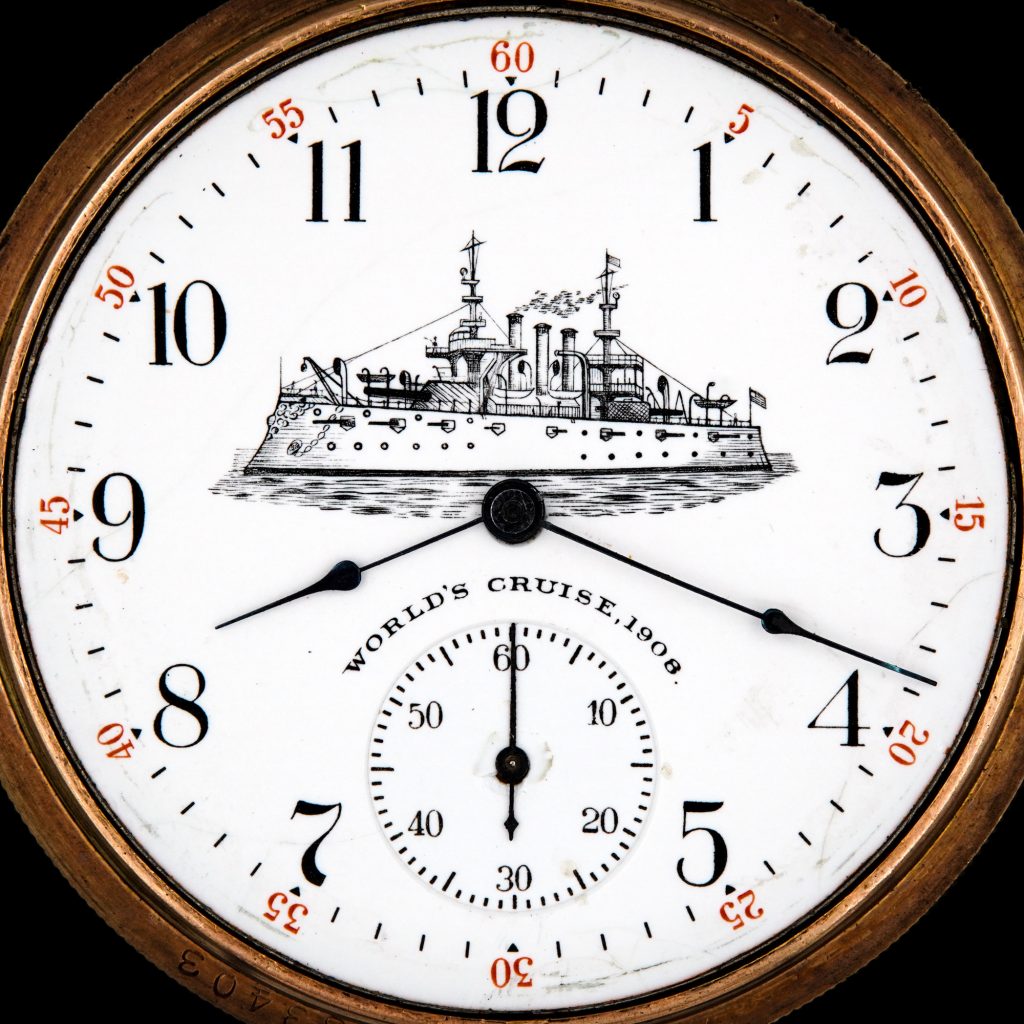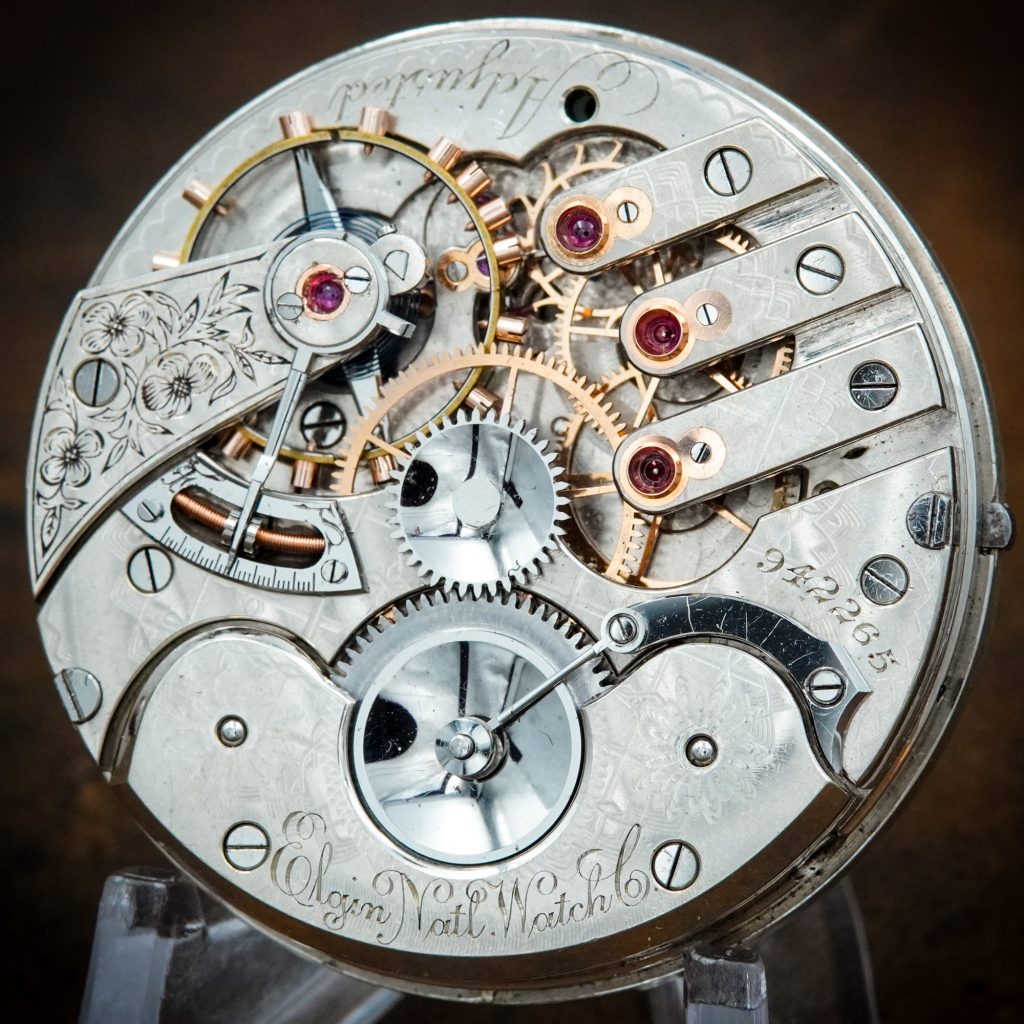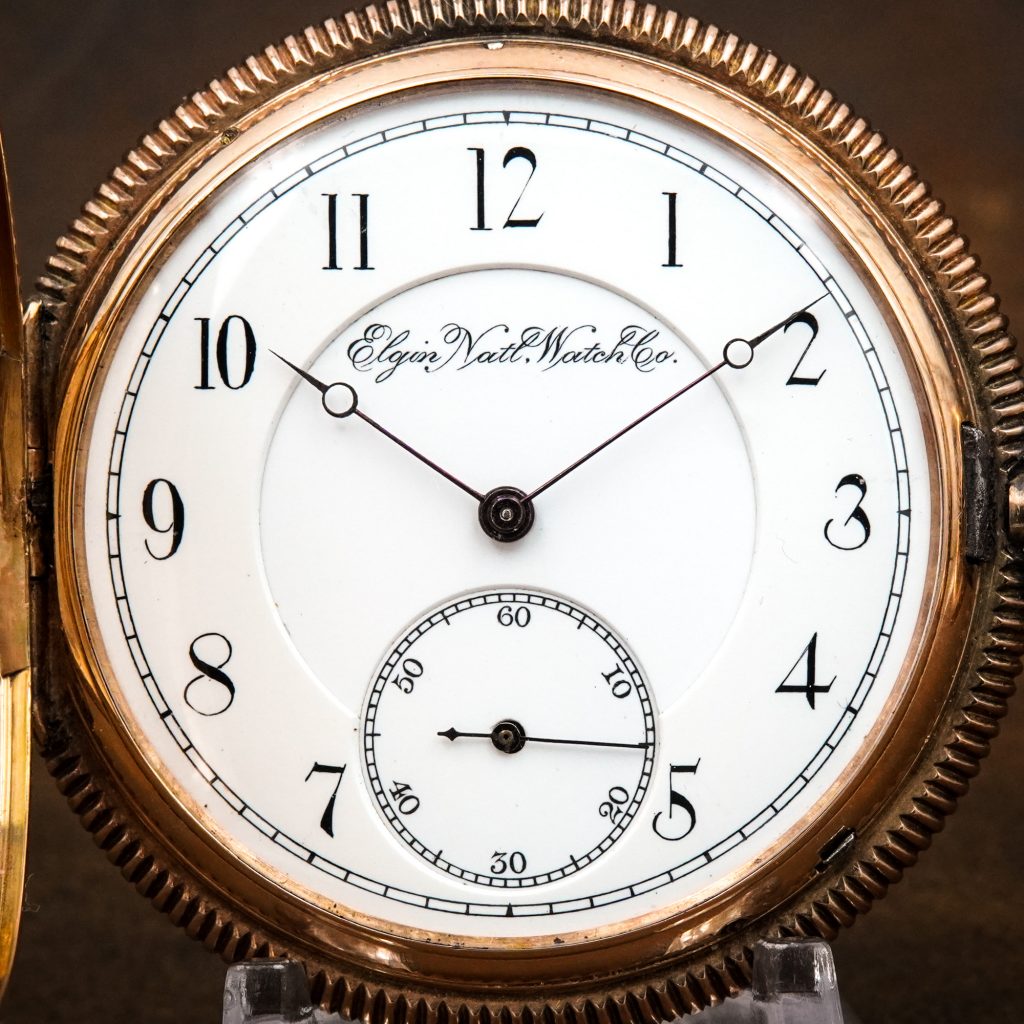Enamel Watch Dial Featuring 1909 Packard Model 18 Touring Car, Fitted on an Elgin 18-Size Grade 207 Another fantastic example of illustrative dials applied using image transfer techniques in the.
Pictured: c.1909 Watch Dial Commemorating The 1908 World’s Cruise, Depicting the USS Connecticut Battleship, Fitted on an Elgin Grade 291 Movement. Using newly-developed image transfer techniques, illustrative dials were also.
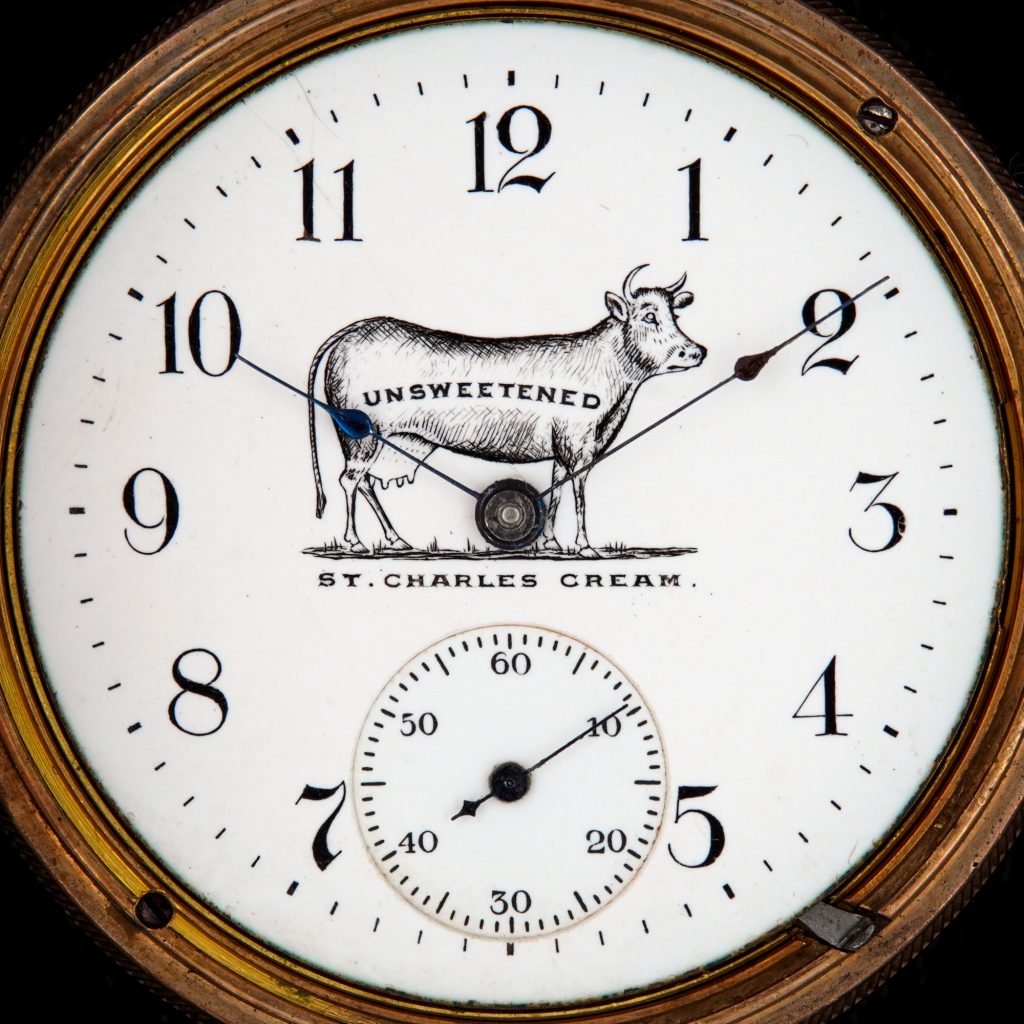
In the late 1890s, photography studios and jewelry supply companies capitalized on the growing trend of applying photographs to watch dials and cases. This novel feature was accomplished by a.
Pictured: Enamel Watch Dial Featuring Portrait Photograph, c.1891 In the 1890s, as photographic techniques were quickly advancing, the practice of placing portraits on enamel watch dials and case caps became.
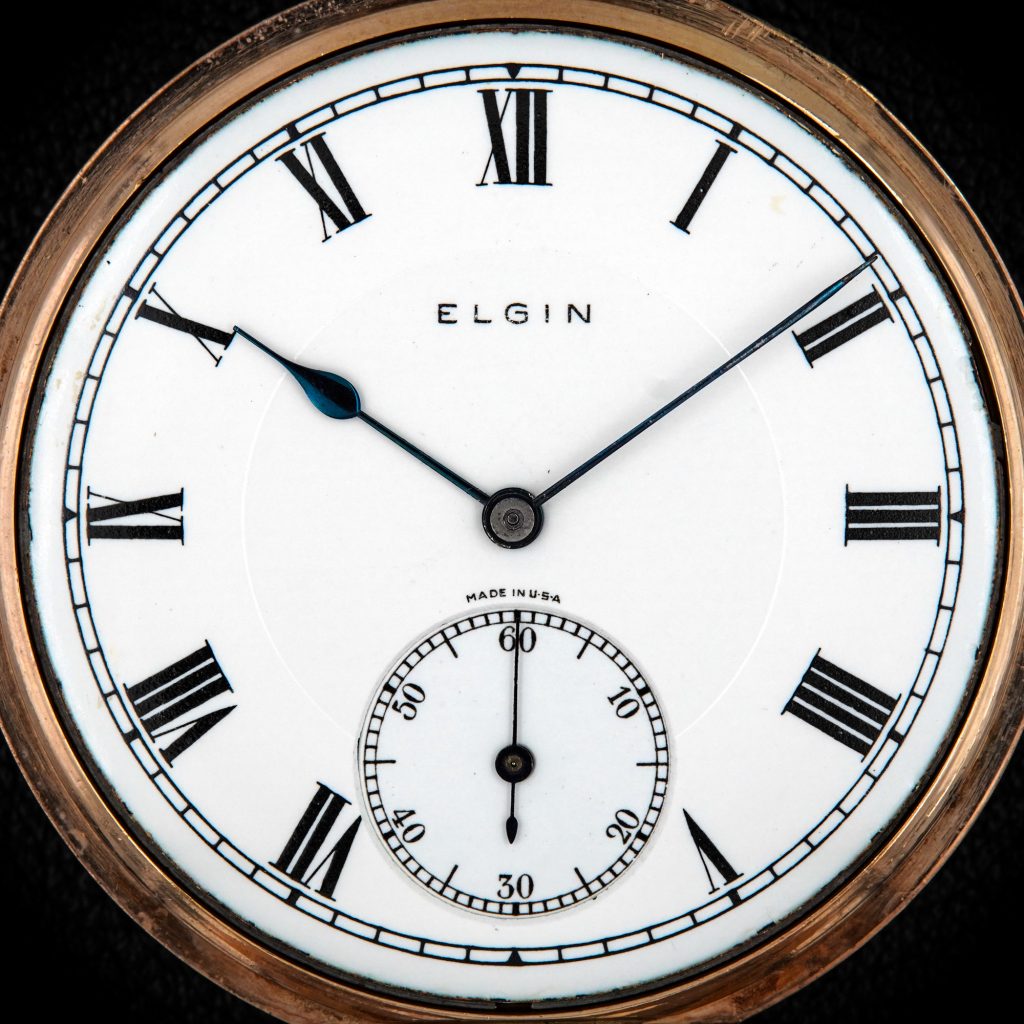
Elgin Grade 91 movement behind the dial featured in yesterday’s post. While factory records list a single run of 1,000 serial numbers designated for the Grade 91, it is estimated.
Pictured: Early Arabic Dial on Elgin Interchangeable Movement, c.1885. Until the 1880s, watch dials manufactured in the United States almost exclusively featured Roman Numeral hourly indicators. Not only was this.
